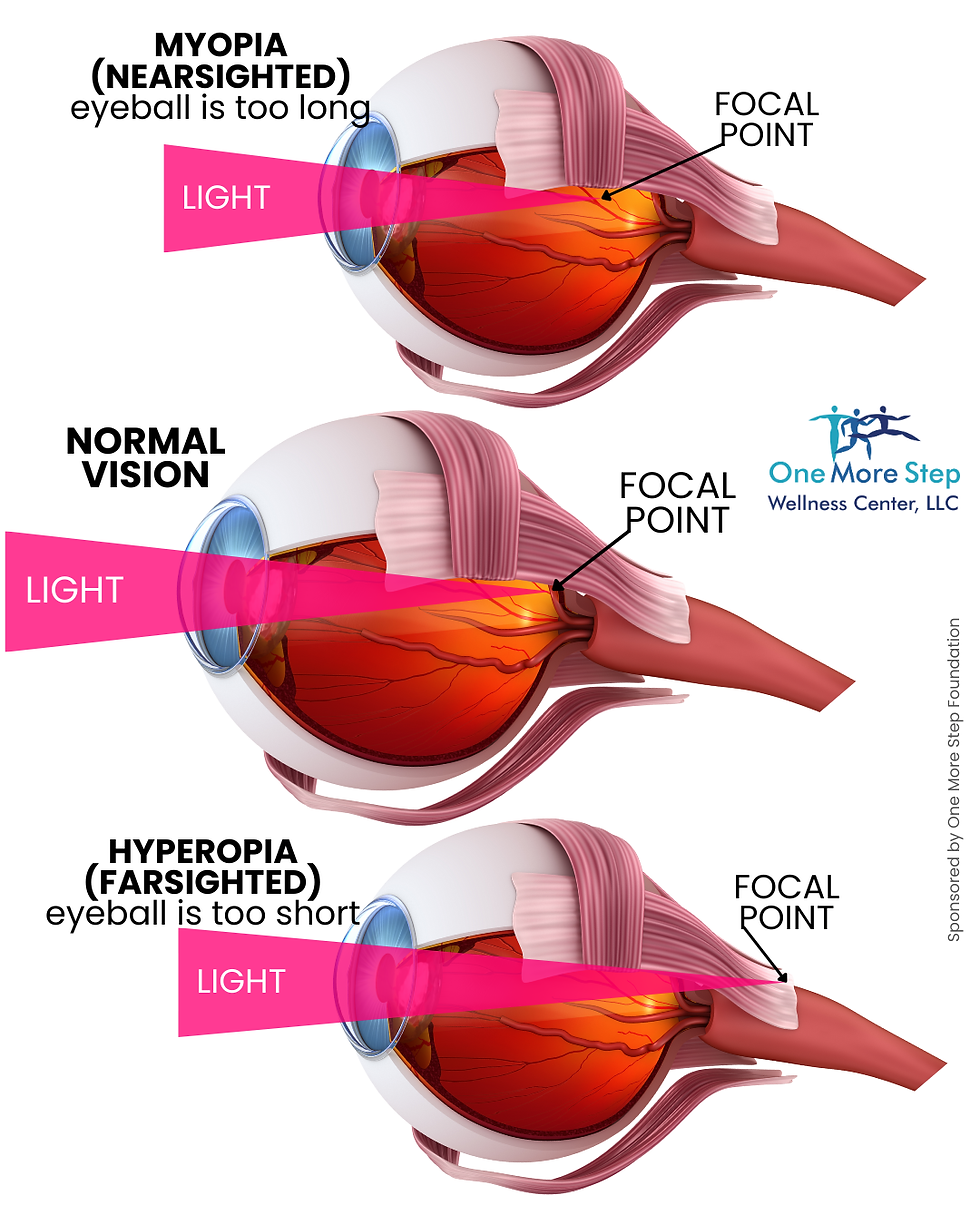Progression of Nearsightedness
- Dr. Melissa Adams

- Sep 2
- 3 min read

In this blog, we will be looking at myopia (nearsightedness) in a 23 year long study, where they looked at myopia starting in childhood and what factors seemed to lead to more/less myopia in adulthood. There is some talk on the internet that wearing glasses makes your eyes weaker, interestingly enough ... this study found the exact opposite (but also ... not surprisingly, if you know eye anatomy and a little about how vision works).
Although I (Dr. Adams) am not an eye doctor, let's start with some eye anatomy so we all have a rough idea about how our vision works!

The iris of our eye is the colored part (brown, blue, hazel, green, etc) and on the other side of our pupil (the center black portion) is the lens. This is what changes shape via the ciliary body and muscle and suspensory ligaments, and allows us to see near or far. The retina is on the back of our eye and where the image (light) is projected. The vitreous body is what fills the eyeball, what the light goes through and the optic nerve is what carries the visual information to the brain. This is very rough, but you get the idea.
So what "goes wrong" when someone is myopic (nearsighted) or hyperopic (farsighted)?

In short, it has a lot to do with the actual shape of our eyeball! When someone is myopic (nearsighted), their eyeball is too long, like more oblong than it should be which means when the light comes through, it ends up being focused in front of the back of the eye. The opposite is true with hyperopia (farsightedness), the eyeball is too short so the focal point of the light is passed the back of the eye. When someone wears glasses, the shape of the lens is decided by the the prescription given, and that prescription helps to focus the light in the correct spot - the back of the eye.
Now, onto the study ...
The study looked at 119 boys and 121 girls with an average age of nearly 11 years old. This study also started during the 1983-1984 school year. At the start, none of the studies were wearing glasses.
Initially, they were randomized for 3 years, into 3 different groups. One group was to wear their glasses continuously, another was to wear their glasses only for seeing at a distance, and another group was given bifocals. They were also given a questionnaire that asked about things such as how much time the child spent reading, outside playing or playing sports, and watching television each day. It also asked about their parents and if they have myopia - to see the potential impact of genetics.
After the first 3 years, the participants were followed for another 20 years, so roughtly in their early 30's. Naturally, some were not fully followed through with for various reasons (moved away, passed away, etc), but overall, they had a good number of participants who followed through.
RESULTS
Myopia seemed to increase in females faster than in males, even when researchers accounted for any and all other potential explanations. Interestingly enough, a short reading distance as a child seemed to also relate to increased myopia as an adult, but only for females, not males.
Adults who were more myopic tended to be females who had at least one parent who was myopic, and who had spent less time playing in sports and in outside activities when they were a child.
Although it is frequently talked about, the amount of reading or close-up work a child did, seemed to impact their level of myopia as a child, but did not seem to impact the level of myopia when they reached adulthood.
Those who spent more than 3 hours a day outside or playing sports seemed to have a slower increase in their myopia, interestingly enough, also those who spent MORE than 3 hours a day watching television experienced a slower increase in their myopia!
Those who wore their glasses continuously experienced a slightly slower increase in their myopia, compared to those who did not wear their glasses continuously.
In general ... whether or not someone has myopia and how strong their prescription ends up being is really down to multiple things - genetics, gender, how much time they spend outside or playing sports, how much time is spent watching television, and whether or not someone is wearing their glasses continuously.
Blog sponsored by One More Step Foundation
This is not medical advice, always ask a chiropractor if chiropractic care is appropriate for you, and your preferred healthcare provider before making dietary, supplement, or lifestyle changes.








Comments